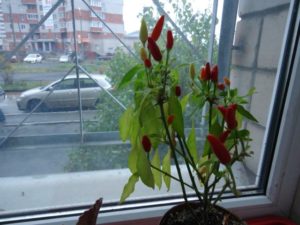Content
- 1 Land preparation
- 2 Video "Growing and caring for pepper"
- 3 Top dressing of seedlings
- 4 Top dressing after planting
- 5 Stimulation of fruiting
- 6 Watering features
- 7 Video "Growing pepper in a greenhouse"
- 8 Seed handling technique
- 9 Growing pepper seedlings
- 10 Growing pepper on a windowsill
- 11 Bell pepper, cultivation and care in the open field
- 12 Bell pepper growing in a barrel
- 13 Features of agricultural technology
- 14 The principles of growing on the site
- 15 Potential diseases and pests and their control
- 16 Growing greenhouse peppers
- 17 Collection and storage
.
How to properly cultivate peppers in the open field and create care? Bell peppers are a southern crop and require warmth and humidity. In the middle lane, peppers are grown in open soil through seedlings and greenhouses. To grow the desired crop crop, you need special care.
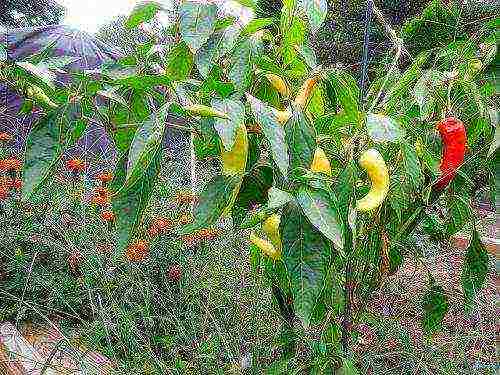
Pepper grows well in the open field of the middle lane
Soil preparation
Growing pepper in the open field requires proper preparation of the land.
Outdoor sweet peppers grow better in places with a mild climate and in an area where there is more sun and less wind. To protect from the wind, they make a shield from plants or erect a wattle fence.
To grow peppers in an open area, it is important to understand after which crops it is more effective to grow peppers.
Planting peppers is best done in the place where cabbage, pumpkin, cucumbers, legumes, table roots grew. In places with a previous harvest of tomato, eggplant, potatoes, planting peppers for three years is not recommended, since diseases of these vegetables spread through the ground.
The soil allocated for the pepper should be fertile and retain moisture. They begin to prepare the ground in the fall. Harvesting in the fall, you need to carefully collect the remains of the previous crop and dig up the ground. They also fertilize the soil, enriching the following substances (per 1 square meter):
- superphosphate in a volume of 30-50 g;
- wood ash - 50-80 g;
- humus - from 5 to 10 kg.
In places where fresh manure was fertilized, sweet peppers cannot be planted, since there is no need for organic fresh feeding. Excessive nitrogen in the soil causes the active growth of the vegetative parts of the pepper, and the ovary is so poorly preserved, which affects the yield.
In the fall, the place where they plan to place the pepper is dug deeply. In the spring, the soil is loosened and fed with fertilizers with phosphorus, potassium and nitrogen. The earth is slightly dug up and leveled before planting seedlings.
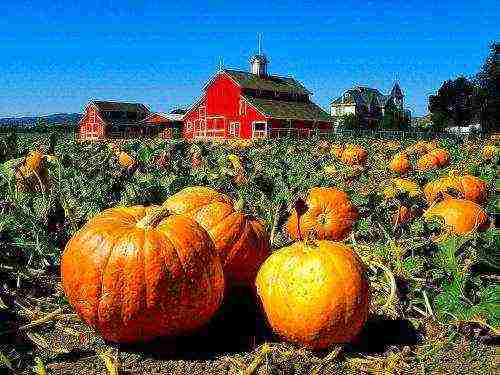
Pumpkin is a great precursor for pepper
How to properly plant seedlings?
Only when the frost is over is it recommended to plant peppers. This is in the second half of May. Planting is carried out according to the scheme 60-70 x 20-30 cm.
Before planting, it is important to water the seedlings well so that the pepper does not wilt. Withered pepper does not take root well, its growth is delayed, which leads to the dropping of the first buds. So the early harvest is lost.
If the weather is hot, it is best to plant in the evening. In gloomy weather, morning disembarkation is recommended.
Prepare the holes for planting and water. It is recommended to pour up to two liters of water (at least a liter) into each hole, which should be heated in the sun. The seedlings are planted deeper than they were planted in pots, like seedlings. On the stalk covered with earth, adventitious roots are formed that can feed the plant.
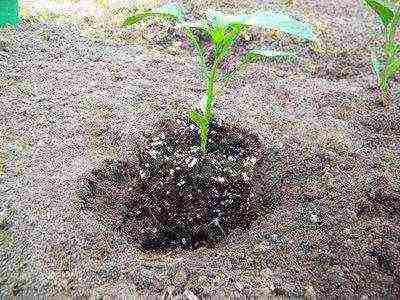
Pepper seedlings are planted in the holes, while ensuring sufficient watering
How to water bell peppers properly?
Sweet pepper seedlings require special care.
In order for the seedling to take root faster, it is necessary to water the root every 2-3 days. For one seedling, 1-2 liters of water are consumed. If the weather is hot, water it every day. Seven days later, the seedlings are checked and where the pepper has died, a new sprout is planted from the reserve. Reduce the amount of watering. This is called "thin" watering. It is important not to harm the plants with abundant watering. How to determine the water requirement of a vegetable? If the plant darkens, this is a sign that water is needed. Prolonged wilting of the plant should not be allowed. If the leaves are withered in the heat, this is not a reason for watering.
When the fruits ripen, watering is done once every 5-6 days. In the heat, watered in the morning or evening hours.
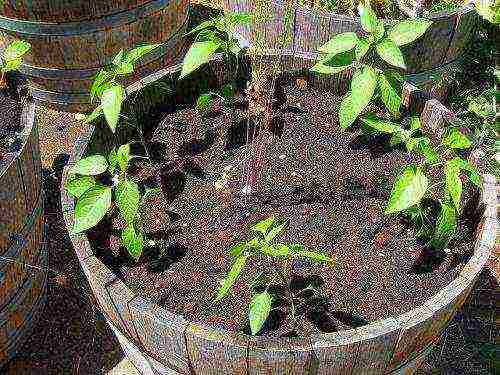
Watering young peppers should be regular
When to loosen the soil?
Sweet peppers grow comfortably in loosened ground. It should not be brought to the appearance of an earthen crust.
What is the use of loosening the soil?
- Air flow to the root is improved.
- The plant grows faster.
- The functioning of microorganisms is stimulated.
By weeding the ground, weeds are being fought.
You should be aware of the slow growth of pepper in the first 10-14 days, because the rhizome is strengthened and the soil does not need to be loosened.
The first loosening of the earth is done after the first "thin" watering. The root system is in the upper ball of the earth, so the loosening will be shallow, at a level of 5-10 cm.
If the soil is heavy, the first time it is allowed to loosen the soil deeper, destroying the soil crust. This way the soil warms up and ventilates better.
Further, loosening is carried out after each rain or watering, when the earth is dry, but there is still no crust.
Hilling is carried out during flowering.

Loosening the soil around the peppers should be done regularly.
Feeding
Pepper care will not bring the desired harvest if not fed.
Seedlings are well fertilized with nettle dressing. To do this, combine nettle with water, in a ratio of 1:10 and insist for two days. The last time the seedlings are fed 2 days before planting, increasing the dosage of fertilizers with potassium (7 g per 1 liter of liquid).
At least three dressings are done per season. The first time during the first plowing (after disembarkation in two weeks). Fertilize with slurry from manure, poultry droppings, mixing with phosphorus-potassium fertilizers or wood ash.
Manure is diluted with water in a ratio of 1: 4, bird droppings are diluted 1:10. It is good to alternate the chicken afterbirth with nitrophos (1 tablespoon per bucket of liquid).
It is effective to add 40-60 g of superphosphate and potassium chloride to a solution of organic fertilizer (manure, droppings) up to 20 g or wood ash in the amount of 150-200 g.
Mineral fertilizers are also used. To do this, add the following substances to 10 liters of water:
- ammonium nitrate - 15-20 g;
- superphosphate - 40-60 g;
- potassium chloride - 15-20 g.
This dressing is used for 8-10 seedlings.
During the formation of fruits, the need for pepper nutrition increases. At this stage, the third feeding is carried out. And the second time they feed at the beginning of fruiting, with an increase in the dose of ammonium nitrate.
If the fruits of the culture ripen small, they are fed for the fourth time.
It is important to know that when caring for peppers, they use fertilizing without chlorine or with a very small percentage. Pepper does not tolerate chlorine. But there is a good substitute for potassium chloride - this is ash from a tree.

Superphosphate is one of the main fertilizers for pepper
How to protect peppers from frost?
Having planted pepper, you need to know how to protect the crop from frost and damage. Caring for the culture at the time of frost, forces ingenuity.
Tents are built from scrap materials (pieces of wood, cardboard, fabric, etc.). They are made in the evening and removed in the morning. But when the cold snap lasts a long time, it is advisable to use a film.
Flowers and ovary fall off often. All due to the unfavorable temperature conditions for the vegetable (low or very high temperature).Growth stops at + 8-10 degrees. But if there is a heat of 30-35 degrees for several days, the buds also fall off.
The consequence of untimely watering is a lack of moisture. Dry soil also reduces crop growth.
Pepper cannot be shaded. In insufficient light, especially during a cold snap, flowers and ovary also fall off.
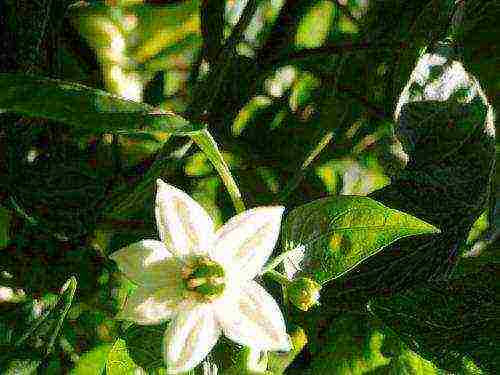
Bell pepper flowers may fall off due to lack of sunshine
Features of the care of bell pepper
There are some subtleties of caring for peppers, in order to better yield:
- It is imperative to pinch the pepper - removing the side and bottom stepsons. But in hot and dry weather, pinching is not recommended. Leaves protect the soil from evaporation. Professionals suggest, in order to increase the yield, to cut off the central flower, which has grown from the first branch.
- During the growing season, long shoots are cut off a little so that there is no shading of other branches.
- Remove plant branches below the main branch and internal branches. Pruning is carried out every 10 days.
- Pollinating insects are useful for sweet peppers. They are attracted by spraying the plant, during the flowering period with a solution of sugar (100 g of sugar and 2 g of boric acid are diluted in 1 liter of hot water).
- Applying mulching of pepper with rotted straw (up to 10 cm of a layer), the frequency of watering will decrease.
- When leaving, it is important to tie up the crop immediately after hilling and mulching.
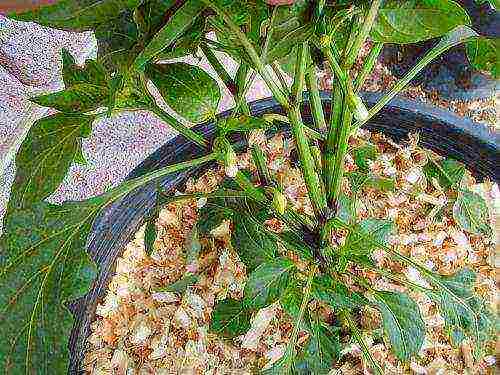
Mulching Pepper Helps Reduce Watering Frequency
Pest control
Pepper is sensitive to diseases, therefore it requires special care.
But most pepper suffers from pests (scoop, whitefly, aphid, Colorado potato beetle, bear, slugs).
So that the plant is not damaged, pollination is carried out with wood ash (three times per season). To fight aphids, you can use a solution of serum with water (0.5 liters of serum per bucket of liquid). And sprinkle the leaves with wood ash on top.
With all the tips in mind, you can grow a great sweet pepper crop.
Subscribe Be aware of new products on our site
Perhaps,
bell pepper
belongs to the most common vegetables among domestic gardeners. It is actively planted both in open ground and in greenhouses. Caring for him cannot be called scrupulous, however, some basic principles and agrotechnical features still need to be considered in more detail. By being ready for the process of growing bell peppers at home, you can achieve visible results.
Land preparation
Very often, it is the choice of the optimal land plot for planting bell peppers that becomes a whole problem. Many farmers believe that a vegetable garden is also suitable for this purpose: the land is regularly fertilized, while it is rather loose. However, there is one significant drawback. As a rule, a vegetable garden is an open area, there are constantly blowing winds, and there is no way to protect the plants from it. These conditions are not considered optimal in the case of bell peppers. Therefore, try to plant this vegetable in a place protected from strong drafts. It is also very important that it is well lit.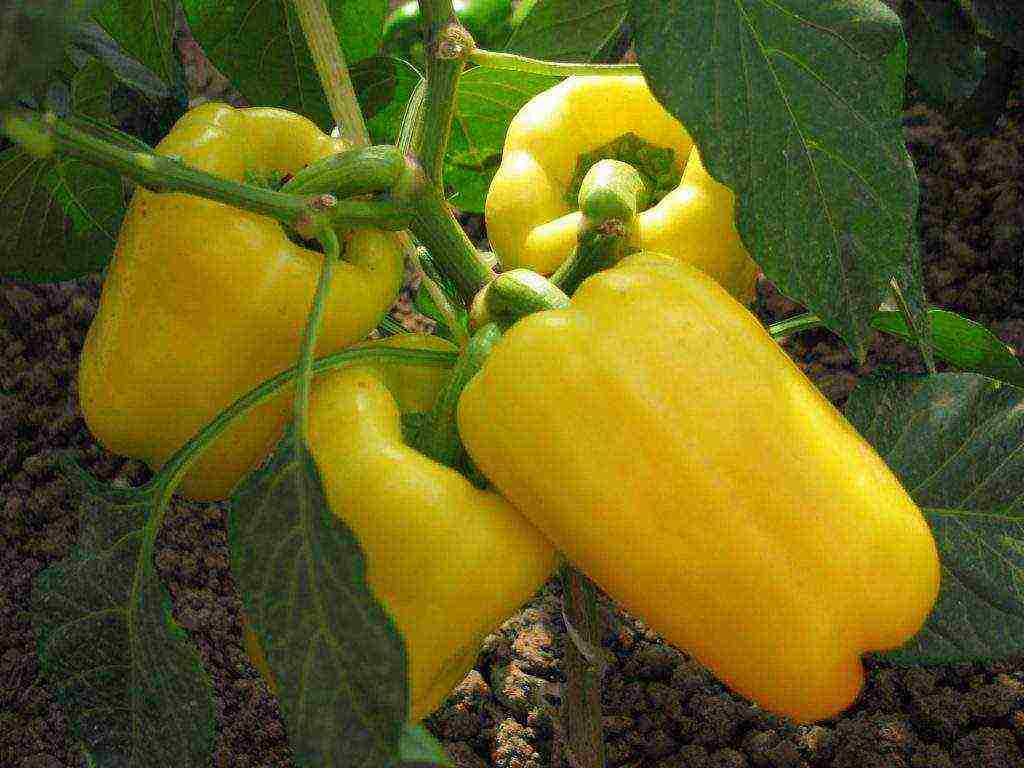
Before planting bell peppers in the open field, you should carry out some soil preparation procedures. What exactly does the farmer need to do:
- it is necessary to prepare for planting this culture, however, like most vegetables and root crops, in the fall. To do this, the land in the garden or garden plot is plowed and then loosened. The final stage of the autumn soil preparation is its fertilizing with mineral fertilizers. In particular, it is worth paying attention to mixtures containing potassium and phosphorus - these are the substances that are most necessary for pepper;
- in the spring, before you start planting vegetables, it is worth re-feeding the soil.Ammonium nitrate is added to the soil at the rate of 40 g per square meter;
- the final stage of soil preparation is saturation with a solution of copper sulfate. It is necessary to add 1 tbsp. l. of this substance in a bucket of water.
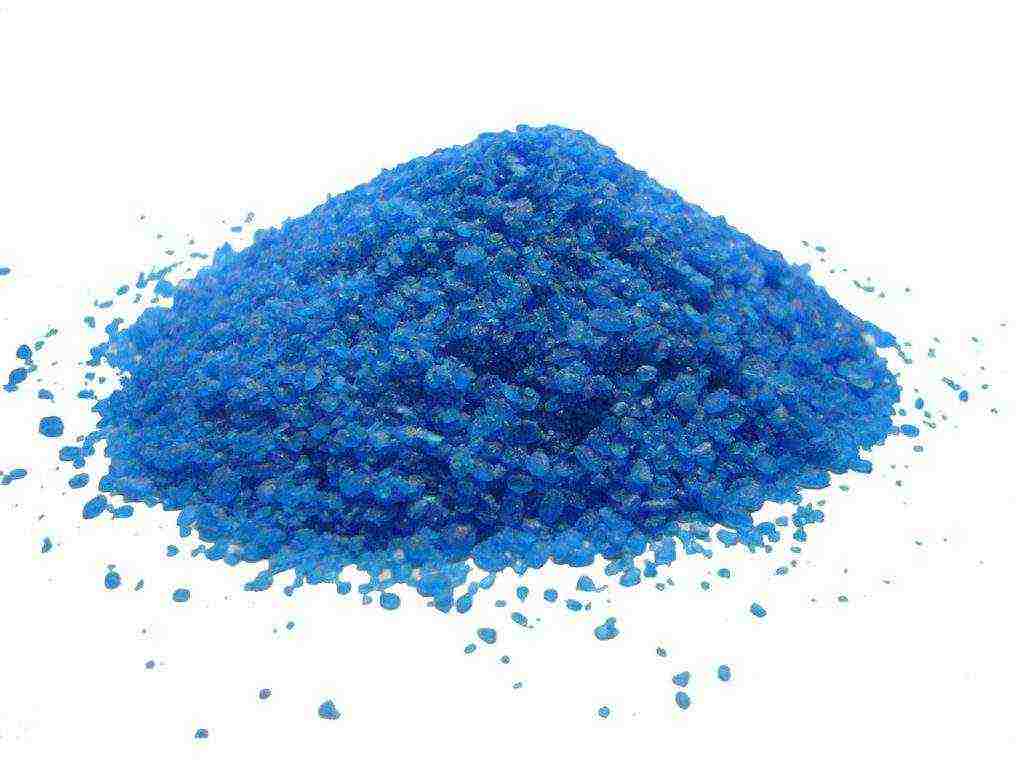
It is recommended that you pay attention to one more nuance before you finally plant a pepper in your garden. Let's say you want to breed several varieties of pepper at once. In this case, it is better to plant the sprouts away from each other. The thing is that this crop can get dusty during the ripening process. There is a risk that as a result you will not get the result you expected. However, there is a way out of the situation. Divide your home plantation of several varieties of peppers with taller plants (corn, tomatoes, or sunflowers). Thus, you can easily grow several varieties of bell peppers in the garden at once.
Video "Growing and caring for pepper"
From the video you will learn how to properly grow and care for peppers.
Top dressing of seedlings
It is necessary to feed the pepper, but you need to clearly understand what kind of soil you are dealing with. Your choice of fertilizers should also depend on its features. Let's say you decide to plant a pepper in a greenhouse and take in the usual garden land. In this case, be prepared for the fact that it will be necessary to recharge the soil every 10 days. If you approached this issue more thoroughly, using a specially prepared earthen mixture for planting bell pepper seedlings in it, it will be enough in the future to carry out no more than three stages of fertilization.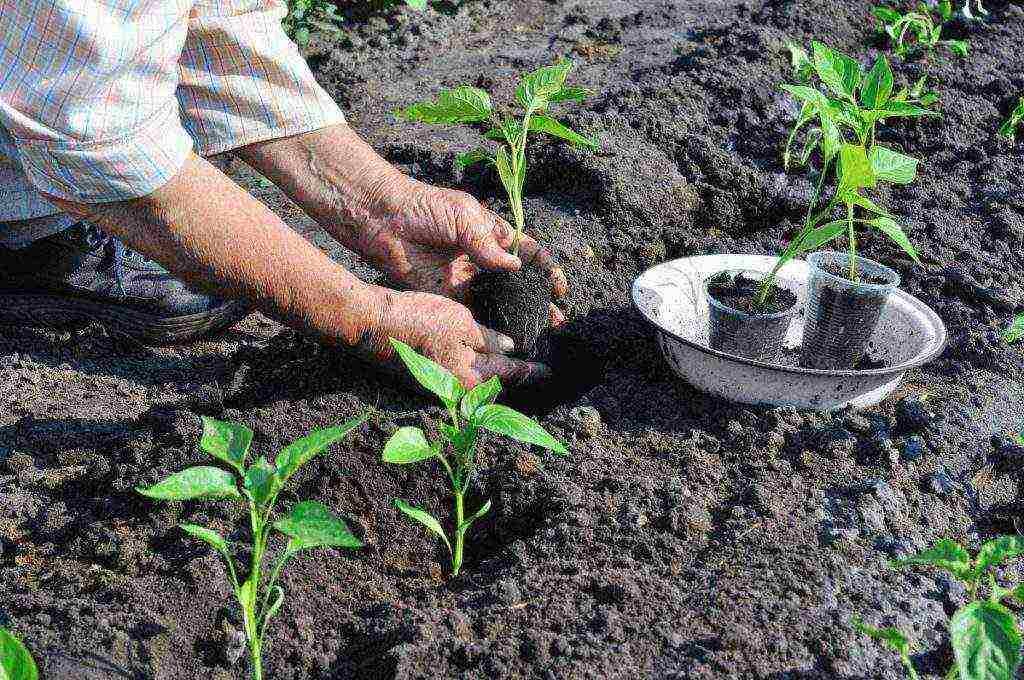
How do experienced gardeners-gardeners get out of the situation?
Many people prefer exclusively natural feeding. Shallow trenches are dug between the rows with seedlings, into which manure or bird droppings are poured. When can this kind of procedure be carried out? It is advisable to do this after 2-3 leaves bloom on the sprouts. When the seedlings of bell pepper grows noticeably, it must be dived, and after that, the next stage of fertilizing the soil is carried out. You can use both special complex mixtures and dry ash or compost tea.
Top dressing after planting
You can endlessly determine the optimal place for planting bell peppers. But your efforts to grow a bountiful harvest of peppers shouldn't end there. Particular attention should be paid to the regular replenishment of the soil with mineral fertilizers. Moreover, this must be done not once, but during the development of the plant, ripening the fruits. What kind of fertilizers are suitable for bell pepper, and in what proportions should they be added to the soil?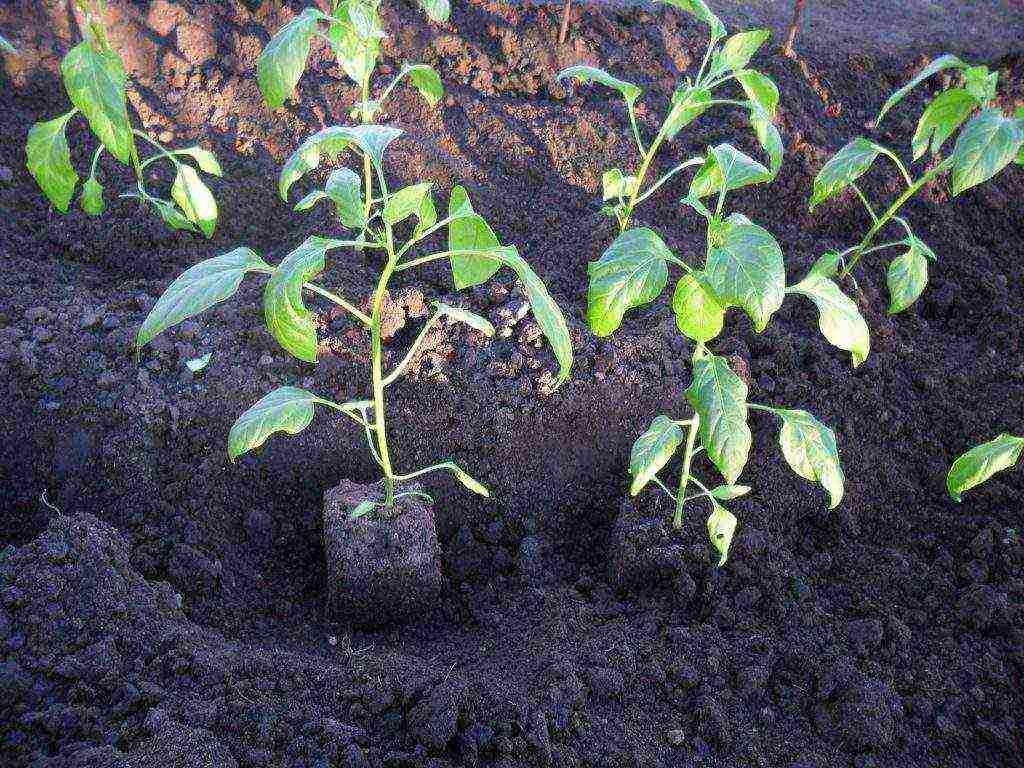
Among the variety of modern fertilizers, urea and phosphates are most distinguished for this agricultural crop. But that's not all.
Today, many summer residents use potash and phosphorus fertilizers for feeding, as well as folk remedies (cow dung or bird droppings). It is best to feed the pepper with natural mixtures.
For example, cow dung is recommended to be diluted with water in a ratio of 1:10. As for poultry droppings, the proportions here are 1:12. These types of dressings are considered the most versatile for bell peppers.
If you prefer to feed a vegetable plant as a preventive measure for diseases and in order to strengthen the vegetative part of agriculture, you can safely use universal fertilizers. However, if for some reason you did not feed the soil in advance, or did it, but noticed certain deterioration in the appearance of bell pepper seedlings, you must act immediately. First, identify the problem and then quickly fix it. For example, if your plant is not sufficiently saturated with nitrogen, over time, the vegetative mass begins to turn yellow.In the case when burns appear on the edges of the leaves of seedlings, the cause is in most cases considered to be a deficiency of potassium in the soil. It happens that the bell pepper bushes acquire a purple hue: this means that it is necessary to apply phosphorus fertilizers to the substrate.
Stimulation of fruiting
In order to prevent the occurrence of such problems, it is worth supporting the seedlings at all stages of their development. For this, there are universal natural fertilizers, among which nettle tea stands out. How to cook it? It is necessary to grind the stems of this plant, and then fill them with some barrel or container (about 2/3). The greens are filled with water. It is advisable to leave the resulting mixture in a dark place for effective fermentation. At the end of the process, and it will take about a week, the solution is used to fertilize the soil, before diluting it with water in a ratio of 1:10. If you wish, you can feed the soil to obtain a more generous yield of bell pepper using a high concentration of nettle solution. To do this, you need to add dandelion, woodlice, plantain and other herbal plants to it.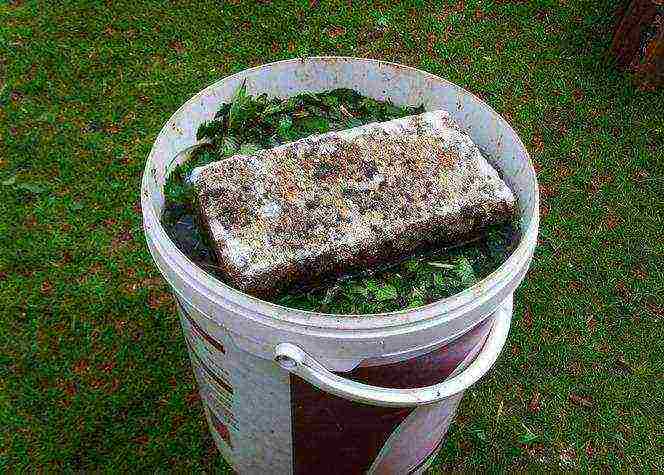
Stimulating fruiting is a good thing, however, it is undesirable to overdo it with it. With excessively large amounts of fertilizer and too frequent feeding, the branchy part of the bell pepper can become stiff. In addition, sometimes you can get the opposite result: when the soil is oversaturated with fertilizers, the fruits grow almost empty inside, falling off long before the end of the ripening period.
Watering features
Outdoor varieties of bell peppers do not require too much maintenance. However, with regard to moisturizing, oversights in this matter are unacceptable, as they can cost you dearly. Interestingly, it is recommended to water the pepper seedlings regularly, it is impossible for the soil to dry out. But it is also not worth breeding excessive dampness.
What rules should be followed about watering pepper:
- after planting seedlings in open ground, it is undesirable to water it immediately. It is necessary to give her a few days to adapt and only after that carry out the first phase of watering. Next, try to observe the established intervals until the seedlings begin to actively sprout;
- as soon as the sprouts are green, it is recommended to water them daily;
- be sure to use warm and pre-settled water for irrigation - non-observance of such recommendations is fraught with the occurrence of diseases in the plant;
- it is important that water does not fall directly on the leaves of the pepper;
- drainage must be present at the bottom of the seedling container. Thus, excess moisture will evaporate in a timely manner.
If you follow the key recommendations, the bell pepper harvest will certainly delight you. In addition, caring for him does not require huge investments and efforts.
Video "Growing pepper in a greenhouse"
From the video you will learn how to effectively grow peppers in a greenhouse.
Bell pepper also called sweet, it is rich in nutrients and vitamins, in various colors, juicy and tasty.
Process growing sweet peppers has its own characteristics, as pepper is a heat-loving vegetable. To get a good harvest of peppers, you need to have knowledge and certain skills.
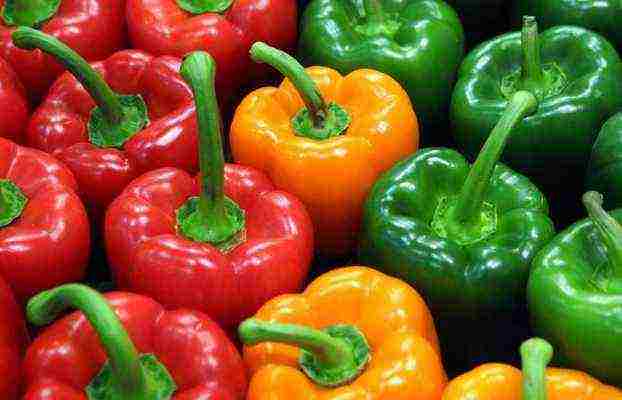
Consider cultivation of bell peppers from seeds, from seedlings, especially care when growing in open ground, pest and disease control, when harvesting.
Content:
Growing bell pepper seedlings
Choosing a place for planting bell peppers
- Video - Peppers, the secret of a rich harvest
Outdoor Pepper Care
Top dressing of peppers in the open field
- Video - HOW CORRECTLY TO FORM A PEPPER !!! CARE AND FEEDING !!!
Pepper pruning
Pests and diseases of bell pepper
Harvesting bell pepper
- Video - 10 ERRORS when growing sweet peppers
Pepper is a plant of short daylight hours, and if the daylight hours are less than 12 hours, the pepper begins to bear fruit earlier.
Planting pepper seeds in open ground is impractical even in the southern regions, because it is necessary to wait until the soil warms up, the pepper will begin to bear fruit later and not for long. Therefore, mainly sweet peppers are grown in seedlings.
Growing bell pepper seedlings
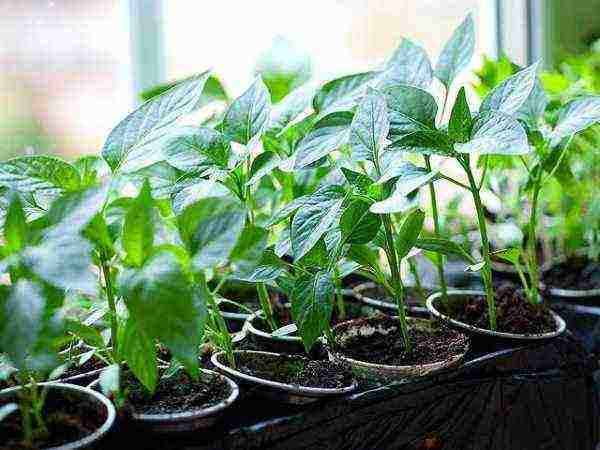
When growing seedlings at home, pepper seeds are sown in February, so that the plants are 90-100 days before transplanting into the ground. Peppers do not tolerate diving well, so try to immediately sow seeds in separate peat pots with a diameter of 8-10 cm.
There is no need to use large pots due to the slow development of the root system of the peppers.
Seedling soil
A light and loose substrate consisting of humus mixed with 1 part earth and 1 part sand is suitable. Add 1 tbsp for 1 kg of substrate. l. wood ash.
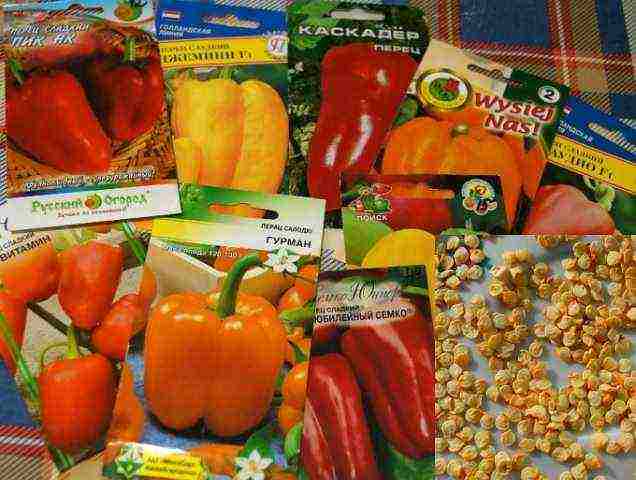
Before sowing, carry out the processing of pepper seeds - soak the seeds in hot water + 50 degrees for 5 hours. Then place the seeds in a damp cloth for germination for 2-3 days, the room temperature should be + 20 degrees. After such pre-sowing preparation, seedlings appear the very next day after sowing.
Seeds sown in cups, pour and cover with plastic wrap or glass. Until the emergence of shoots, keep the pots in a warm place with a temperature of + 22 degrees. After the emergence of seedlings, remove the film and transfer the seedlings to a room with a temperature of 26-28 degrees during the day and 10-15 degrees at night.
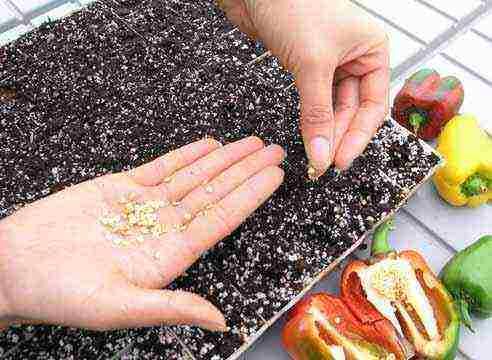
When caring for seedlings of peppers, do not allow the soil to dry out, but we do not recommend excessive watering.
Watering with warm water +30 degrees, cold water will grow frail seedlings, the plants can get sick. The indoor air should not be too dry, protect the plants from drafts and spray the plants.
In winter in February, the seedlings require additional lighting so that the daylight hours are from 7 am to 9 pm.
First feeding carried out in the phase of appearance of 2 true leaves with the following solution: dilute 5 g of ammonium nitrate, 10 g of potassium fertilizers, 30 g of superphosphate in 10 liters of water.
Second feeding carried out 14 days after the first mineral fertilizers in 2 times greater proportion than the first.
Third feeding carried out 2 days before planting seedlings in the ground. The dose of potassium fertilizers in the solution is increased to 70 g per 10 liters of water.
A few weeks before planting pepper seedlings, the plants are hardened, taking them out into the fresh air for several hours. Make sure that the air temperature is not lower than +13 degrees, the seedlings may die.
Choosing a place for planting bell peppers
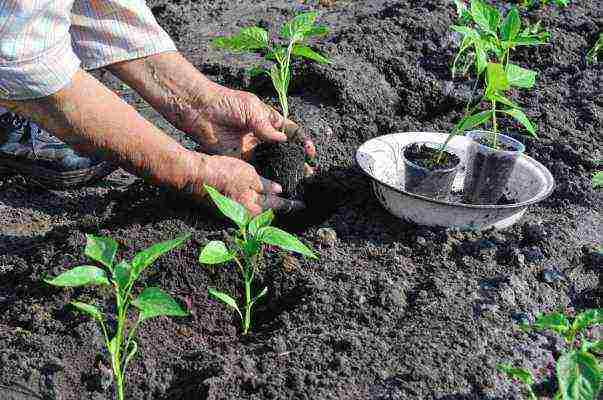
Pick up a plot in the garden where cucumbers, onions, pumpkins, carrots, cabbage, zucchini, and various siderates grew before. Pepper does not grow well and bear fruit if planted on a site where potatoes, eggplants, tomatoes, peppers had previously grown.
Pepper grows best on light soils. Prepare the site for planting in advance, in the fall add 50 g of phosphorus and potash fertilizers per m2, dig deep. In the spring, add 40 g of ammonium nitrate per m2 of the plot to the topsoil.
Before planting seedlings in open ground, decontaminate the soil with such a solution: dilute 1 tbsp of copper sulfate in 10 liters of water.
At the end of May, pepper seedlings are planted in open ground with a distance of 40x40 cm between plants. Seedlings are planted in a film greenhouse at the end of April.
Seedlings should be planted at the same depth as the plants grew in cups or boxes. Do not expose the roots, but also try not to drop in the root collar.
Peppers do not like cold soil, arrange for peppers in tall beds, raised 25 cm to get a good harvest of peppers.
Attention: peppers are susceptible to over-pollination, so plant different varieties of peppers as far away from each other as possible or separate them using tall plantings of tomatoes, corn, sunflowers.
Video - Peppers, the secret of a rich harvest
Outdoor Pepper Care
It is necessary to carry out watering, fertilizing, garters and weeding of pepper plantings in a timely manner.

Top dressing of peppers in the open field
During the season, it is necessary to carry out 3-4 feeding with chicken manure diluted with water 1 x 10.Alternate such top dressing foliar, using spraying with nitrofoskoy (1 tbsp. L. Per 10 l. Water).
Lack of potassium will lead to curling of the leaves, the appearance of a drying border. But pepper does not tolerate an abundance of potassium chloride.
At lack of nitrogen pepper leaves become smaller, acquire a matte grayish tint. If there is an excess of nitrogen, flowers and ovaries are shed.
Lack of phosphorus - the leaves on the lower side become deep purple, nestle against the plant stem and rise up.
At lack of magnesium leaves become marbled in color.
Video - HOW CORRECTLY TO FORM A PEPPER !!! CARE AND FEEDING !!!
Pepper care
Carry out pinching in hot and humid weather, removing side shoots, especially the lower ones. Conversely, when the hot and dry weather is not the peppers, the leaves during this period protect the plants from evaporation of soil moisture.
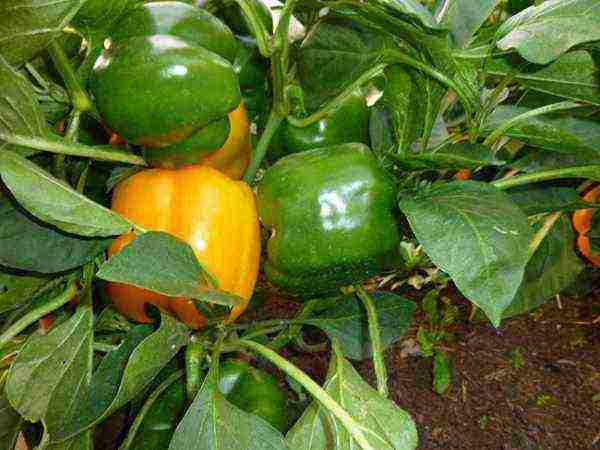
Pepper pruning
During the growing season, the longest shoots are pruned, especially all the shoots below the fork of the main stem, as well as all the branches that go inside the plant, are removed. Prune every 10 days and after harvesting.

To attract pollinating insects, spray the planting of pepper with a sugar or honey solution: 100 g of sugar, add 2 g of boric acid, dilute everything in a liter of hot water.
Mulching the pepper with rotted straw (10 cm layer) will reduce the frequency of watering to 1 time in 10 days.
Timely carry out the garter of plants, it is better to do this after hilling.
Pepper pests and diseases

Pests such as slugs, scoops, aphids, whitefly, bear and Colorado potato beetle can harm plants. It is necessary to pollinate the pepper with wood ash 3 times per season.
Common Bell Pepper Diseases - late blight, Septoriasis, macrosporiosis, apical rot, white rot, black leg.
In the fight against the bear, before planting in the ground, fill the planting holes with onion water (insist 500 g of onion husks in 10 liters of water for 3 days).
If aphids are damaged, treat the plants with a solution: dilute 1.5 liters of milk whey in 10 liters of water. After processing, shake with ash.
Harvesting bell pepper
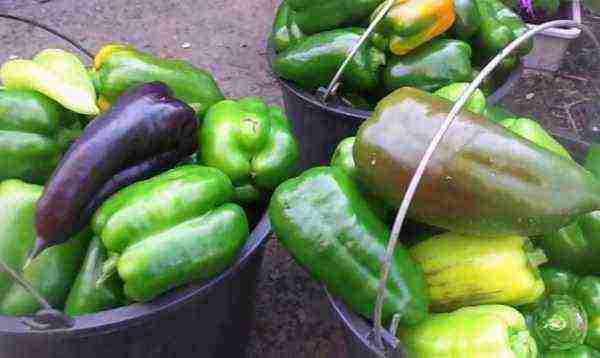
When the peppers are maturing in size and color, start harvesting by cutting off the stalked vegetables. Ripening of pepper begins from the beginning of August and lasts until the first frost.
Video - 10 ERRORS when growing sweet peppers
Big harvests of sweet pepper!
To get a good harvest of bell peppers, it is important to create the necessary conditions for it. High humidity and high temperature are those indicators that have a positive effect on this vegetable. But such a plant can be grown not only in warm regions. It is often found in vegetable growers' beds. In order for the pepper to produce a crop, it is important to know how to plant peppers in open ground, what to put in the holes, as well as what should be the distance when planting peppers in open ground, and how to properly care for sweet peppers in open ground.
Seed handling technique
Outdoor cultivation of bell peppers begins with proper seed preparation. The technology for preparing bushes for planting is to calculate the timing, because the sowing should be carried out so that by the required date the pepper is ready for planting in the ground.
There are several seed treatment techniques for successfully maintaining and improving planting stock. With their help, you can increase guarantees for a successful harvest.

Interesting! If the seed is left untreated, the seeds will sprout fourteen days after planting. When processing, the result will be visible on the third day.
First of all, it is necessary to determine which of the seeds are healthy. To do this, they must be filled with a 3% solution of baking soda and water at room temperature. Healthy seeds will remain at the bottom of the pot in five minutes, and empty and unsuitable for planting will float to the surface.After the check, the seed is rinsed out of salt and prepared for processing.
The inoculum is disinfected using various solutions. These can be Albit, Fitosporin, Alirin-B, or Trichodermin. You can also use your grandmother's recipe and treat the swollen pepper seeds with a solution of potassium permanganate. 30 minutes will be enough for the treatment to give a result.
Such preparations as Ecogel, Novosil or Epin increase the immunity of the plant and accelerate its growth. They are applied according to the instructions attached to them. To improve the effect, such preparations can be used after the ascent of the sprouts.
In order to make the seeds strong and strong, special fertilizers are used that strengthen the seeds. To do this, it is enough to soak the seeds in diluted fertilizer for 12 hours.
Growing pepper seedlings

Seedlings are grown in the ground three months after sowing the seeds. Therefore, it is necessary to prepare since February. It is important to complete all the necessary procedures before proceeding with sowing seeds. First of all, it is necessary to process and disinfect the seeds. Then they are hardened and soaked. After that, they are ready to disembark.
Sowing seeds
In order for the pepper to grow faster, you must first wrap the seeds in a damp cloth and hide in a warm place for two days. After that, you can plant them in pre-prepared soil (in boxes, pots or other containers). The distance between the peppers when planting in the ground should be 1.5 cm, after which the container is covered with glass or plastic wrap until the seedlings rise.
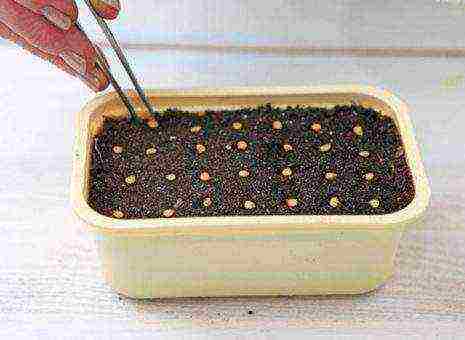
Important! For planting bell peppers, you need a light soil, which consists of sand, black soil and humus. Water the seedlings with water, which is infused for one day.
It is important to regularly apply fertilizers of organic and mineral origin to the soil. The first complementary feeding occurs after the first leaves on the seedlings bloom.
Growing pepper seedlings
You can prepare soil at home using the following components:
- sod land;
- peat;
- humus;
- sawdust.
All components are mixed in a 2: 4: 1: 1 ratio. Then ash and sand are added to the formed soil, adhering to the following dosages: three tablespoons of ash and 0.5 liters of river sand per bucket. The resulting consistency is poured with potassium permanganate.
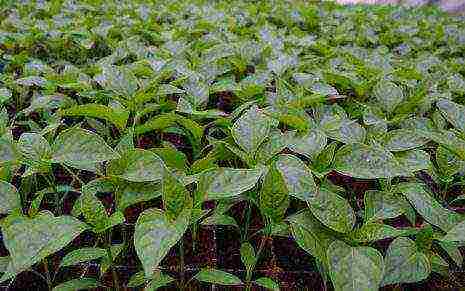
There are two ways to grow bell peppers:
Using a pick
It is important to carry out a pick on time so that the plant takes root better. As soon as the seeds germinate, the grower counts 20 days and makes a pick. Since the root of the pepper is poorly restored, it is not touched, but other parts of the plant are used.
Without using a pick
This technique is more common. It is only necessary to move the seedlings from a smaller container to a larger one. Then the root system does not touch and the plant takes root faster.
Growing pepper on a windowsill
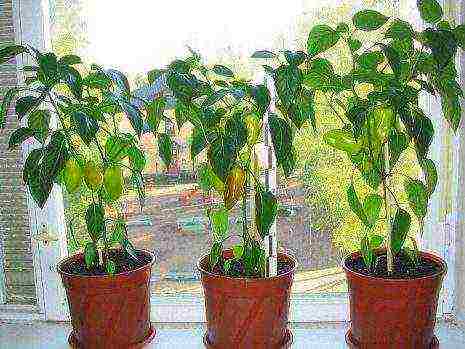
When growing bell pepper on a windowsill, you need to know a few subtleties and nuances. First of all, you need to choose the right time for planting the seeds. Since bell peppers at home often lack warmth and sufficient moisture, they will sprout longer than the allotted time. Therefore, it is recommended to plant seeds in late February - early March.
For the plant to grow normally, it needs to be provided with 12 hours of light. To do this, it is enough to keep the windows in constant cleanliness, since dirty windows take away some of the light.
Do not forget about the humidity in the room. For bell peppers, it should be 70%. For this, a humidifier is installed in the room. Of course, you can spray plants with a spray bottle, but a humidifier will be more rational and safe.
For planting seeds, two-hundred-gram cups are used, which are replaced by liter cups after one month has passed after planting.
Bell pepper, cultivation and care in the open field
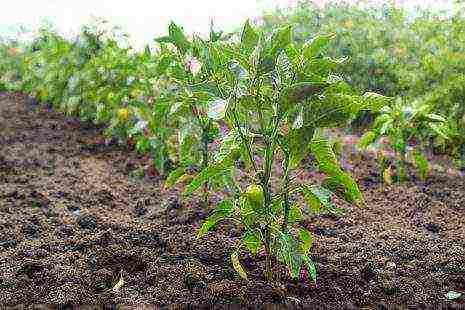
The technology for growing peppers outdoors is similar to growing tomatoes. It is important to water the plant on time, feed, shape, and, if necessary, remove stepchildren. Do not forget about protection from various pests and diseases.
It is necessary to water sweet peppers as soon as they are planted in open ground, then after five days. After each watering, it is necessary to loosen the soil so that there is no hardened soil. Plant feeding is carried out three times per season. For this, nitrogen, potassium and phosphorus are used.
Don't forget about heat protection. To prevent pollen from losing its ability, it is necessary to make screens that will darken the plant.
You may be interested in:
Bell pepper growing in a barrel
You can also grow a culture in a barrel. To do this, you need to take the barrel and remove the bottom from it. In order for oxygen to enter the barrel, holes must be made in its walls, 1 cm in diameter at a distance of 20 cm from each other.
Then the following components are laid out in layers: faded (layer thickness 10 cm), soil mixture (turf and ordinary soil, compost).
In early May, one pepper bush is planted and covered with a film. After three hours, cut off all the lower leaves and cover the plant 10 cm with soil mixture. After the plant grows up, repeat the procedure. Do this until the barrel is completely filled with earth (this will be the beginning of June). Then the barrel can no longer be covered with foil.
Features of agricultural technology
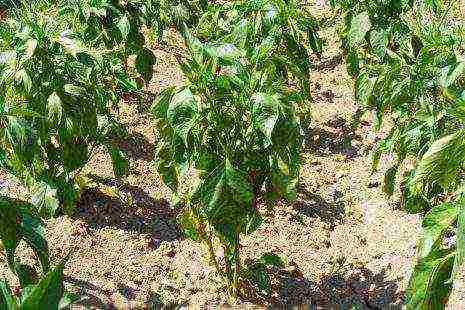
The agricultural technology for growing sweet peppers in the open field consists of the following processes:
- Irrigation. It is necessary to water the seedlings with settled water every day. You need to be careful not to overdo it with water.
- Prevention. Spray the plants periodically with a spray bottle to maintain moisture.
- Temperature. It should not exceed 22 ° С during the daytime and 15 ° С at night.
- Top dressing. To increase the immunity of pepper, it is necessary to feed it with minerals.
The principles of growing on the site
Bell peppers are a plant that requires care and attention. Therefore, an experienced gardener prepares all the necessary tools for caring for him in advance. Outdoor maintenance for sweet peppers consists of the following steps:
- preparation of seedlings;
- planting a plant in the ground;
- watering;
- feeding.
Preparing bushes
Before planting seedlings in open ground, they must be hardened. For this, the plant periodically needs to be exposed to the sun for adaptation. This will make the pepper weather resistant and strong. Hardening begins two weeks before disembarkation.

The process of planting plants in open soil
To get a good harvest of pepper, you need to choose the right place for the beds. This area should not be in direct wind streams, be sunny and protected from drafts. Since the fall, it is important to prepare the necessary site for planting, having previously dug it up and fertilized it. It is necessary to plant bell peppers in open ground by impregnating the soil with potash and phosphorus substances.
When planting, it is important to remember that bell peppers do not like direct sunlight and too hot air. Therefore, care must be taken to keep the seedlings in the shade.

Depending on which variety is planted, a scheme for planting bell peppers in open ground is being developed. The holes should be at a distance of 35 cm from each other, and 45 cm between the rows.If the pepper is planted in the ground in two, then the distance increases to 60 cm.
There is also a square-nest method of planting pepper. Its essence is that each hole has the same sides, which do not exceed 60 cm.
Peppers are transplanted into the ground in late spring or early June, depending on weather conditions.It is recommended to do this on a cloudy day or in the late afternoon, so that there are no direct rays of the sun on the ground.
Planting pepper in open ground begins with the fact that the seedlings are first watered and carefully, without damaging the root of the plant, removed from the container along with a lump of soil. In this case, it is important to know at what depth it is necessary to plant pepper seedlings in the hole. The stem of the plant is placed under the ground up to its first lower leaves. After the planting of sweet pepper in the open ground has been completed, it is recommended to insert pegs next to it, to which it will be tied in the future.
Watering features
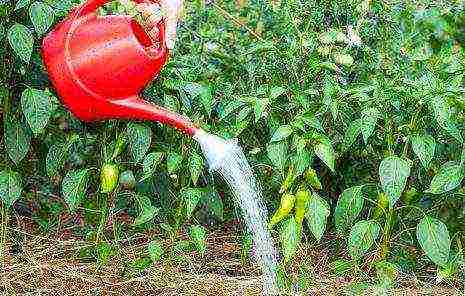
Bell peppers do not require regular watering and moisture in the open field. Initially, it must be watered during planting, then after 5 days and then watered once a week. About one pepper bush will need one liter of water.
During flowering, the water for irrigation should be around 20 ° C. Do not forget, after each watering, loosen the ground around the bush so that a crust does not form. To keep moisture stored longer, bell peppers are advised to mulch. Pepper mulching in the open field is carried out using re-matured straw or grass.
Top dressing of pepper
It is necessary to fertilize the soil three times during the entire season. In order for plants to develop and grow normally, they need nitrogen. Therefore, the first feeding is preparations with nitrogen content. It is done after 2 weeks after planting the bushes in the ground.
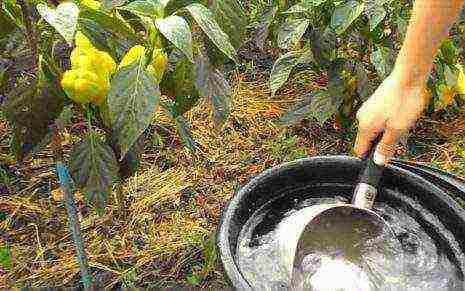
The next feeding is carried out during the flowering period of the pepper. The plant needs potassium to form fruit. It is found in wood ash. And the last feeding occurs when the first fruit is formed. For this, potassium salt and superphosphate are used. Two teaspoons of each component are added to a bucket of water and the plants are watered with the resulting solution.
Potential diseases and pests and their control
The following pests can often be observed on pepper:
- aphid;
- slugs;
- Colorado beetle;
- whitefly;
- bear.
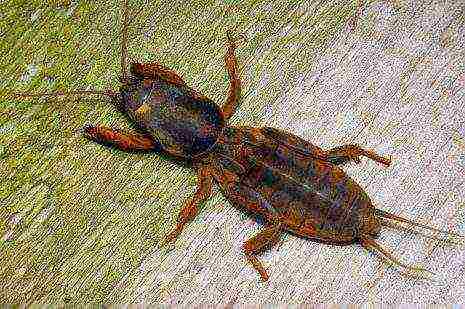
These pests are collected by hand, and a solution of wood ash is used for aphids.
The most popular diseases are:
- Yellowing of the leaves. This means that the pepper is deficient in nitrogen. For treatment, it is necessary to add 1 teaspoon of urea to 10 liters of water and spray the bushes with the resulting solution.
- Falling ovaries. A boric acid solution will solve the problem (1 spoon per bucket of water).
- Fruits develop poorly. It is treated with superphosphate or wood ash.
- Blackleg. Arises from an excess of moisture.
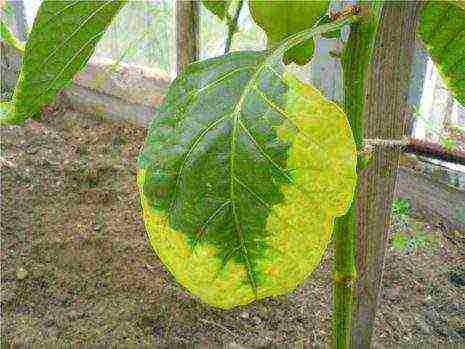
Growing greenhouse peppers
Planting a culture in open ground under a film is considered the most convenient, as it brings the culture closer to normal conditions. The seedlings can be planted in the greenhouse in April. To do this, holes are made in the greenhouse, keeping the correct distance.
It is important to fertilize the hole before planting seedlings. A solution based on chicken manure or manure is perfect for this (for 10 liters of water, half a glass of fertilizer). After planting, the bushes are watered with 1 liter per one bush. And to support the plant, you can make a support from the pegs, so that later you can tie the pepper to it.
Collection and storage
Bell peppers are harvested as the fruit ripens. Some growers can pick unripe fruits to relieve weight from the bush. This vegetable is used in many recipes fried, stewed, or baked. The fruits can be peeled and frozen or preserved.
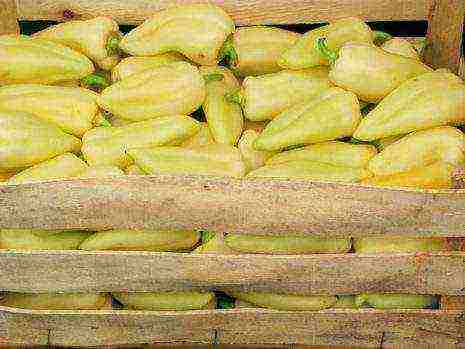
In order to get fresh pepper before December, you can transplant the flowering bush together with the earth into any container and leave it on the windowsill in the house.


